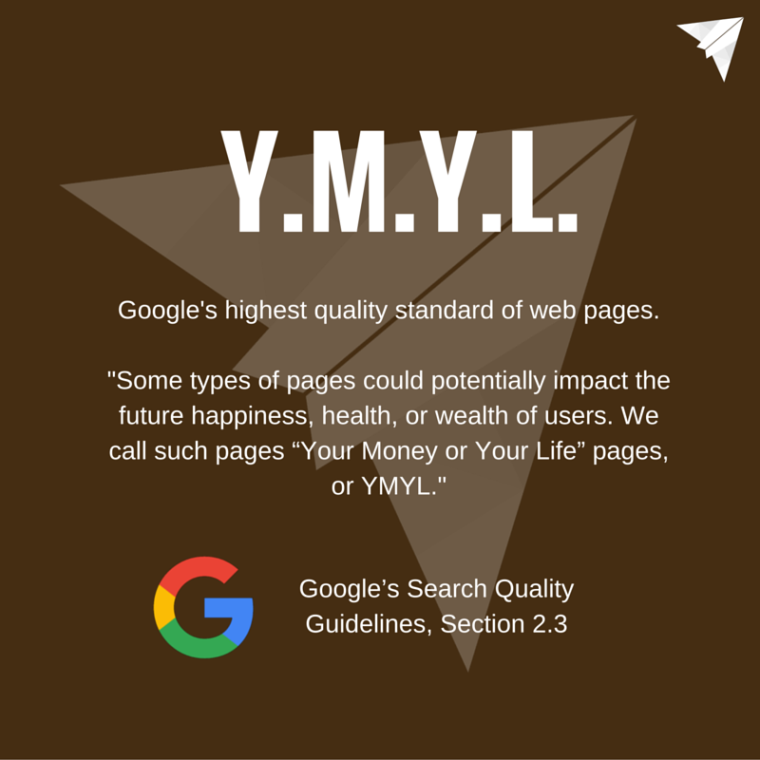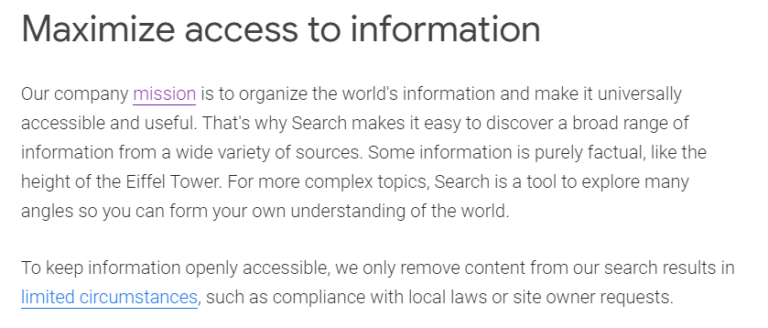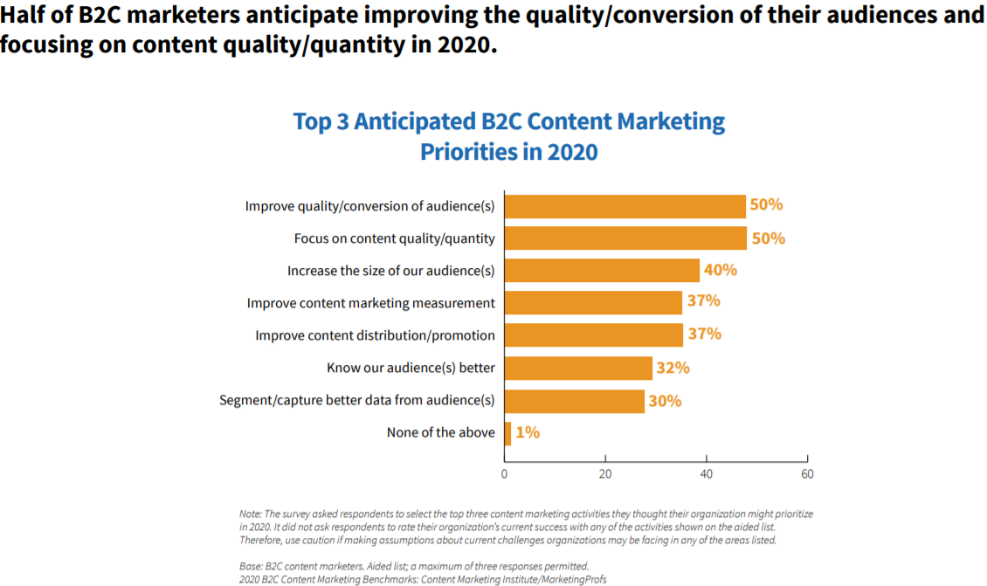Are you obsessed with creating great content?
I hope not.
Today, that’s a horrible approach to content creation.
Why?
- Great is such a vague descriptor that it’s useless.
- You’re biased.
- You don’t get to decide if something’s great – your readers do.
Anyone who’s been at this for a while knows the bone-numbing horror of hitting the publish button on what they think is their greatest content ever, only to have it savaged by readers.
Or worse, ignored by people and search engines alike.
Nowadays, great content fails miserably for one big reason: you’re not really giving people a reason to visit your site and read your content.
“Great” content isn’t a great thing to create anymore.
So, what should we be creating instead?
Read on to discover the answer to that question.
If Everyone Is Creating Great Content…
For a long time, content creators and SEO blogs advised that the best possible thing you can do to improve your position in the SERPs was to create “great” content.
Advertisement
Continue Reading Below
For a long time, that was fantastic advice.
If you’re up to speed with your internet history, you know that Google was once flooded with low-quality, thin content aimed at ranking well rather than providing any actual value to readers.
Even Google recommended it in its content guides.
Thanks to efforts by Google, though, to punish bad content and reward great content, great content now is no longer a rarity.
Plus, there is also a growing awareness that high-quality, customer-focused content really does deliver better in the long run.
(Not that I’m complaining. Believe me, we’re better off for it.)
However, in 2020, that creates a bit of a conundrum for content creators.
According to Worldometers, there will be 800,000+ blog posts published today. (You can watch the ticker for yourself.)
Sure, not all of them will be great, but even if a quarter of them are, that’s just over 200,000 other blog posts today drowning out yours in the sea of greatness.
Advertisement
Continue Reading Below
In other words, great is the new mediocre.
And nobody ever seized a competitive advantage by being merely average.
So, what do you do in such a situation?
Simple:
You need greater content.
Greater content isn’t just catchy, well-written blog posts with an attitude.
It’s 2020, and we know exactly what Google (and our readers) expect.
Consider these 10 ways to step beyond mere greatness in your content.
1. Accurate Content
In the era of misinformation, make sure you’re standing out for the right reasons.
You slave away at that blog post for hours or days but it’ll do nothing for you if it gets flagged on social media for misinformation.
Worse, inaccurate content will destroy your credibility in your industry, especially if your competitors notice.
How do we make content as accurate as possible? There are two easy and vital things you can do:
- Check your facts. Whether it’s stats, claims, or quotes, always check your facts. FactCheck is great at this, as is Snopes.
- Revisit old content. Just because something’s true now doesn’t mean it’ll be true in a few years. Things change all the time, so keep your content updated.
2. Comprehensive Content
Google – and readers – like comprehensive content.
That’s content that answers every question they have (and questions they didn’t realize they had) conveniently in the same place.
According to HubSpot, the ideal post for SEO ranges between 2,100 and 2,400 words – which takes about 7 to 8 minutes for an average adult to read.
Our own survey suggested that between 1,000 and 2,000 words was the best length.
Seem like a big range? It is.
That’s because comprehensive content doesn’t mean long content.
It’s a mistake to focus on achieving some magical word count beyond what your competitors have in a misguided attempt to outrank them.
People don’t want tangents.
They don’t want to read about the biography of your grandma’s best friend’s nephew’s boss’s golden retriever before you give them the recipe.
Let your content dictate the length, not the other way around.
3. Credible Content
Are you serving expert, authoritative, and trustworthy content?
Advertisement
Continue Reading Below
If so, Google will notice and so will your readers.
The concept of E-A-T (which stands for Expertise, Authoritativeness, and Trustworthiness) is mentioned 135 times in the Google Search Quality Guidelines.
If you’re in a niche that “impacts the future happiness, wealth, or health of users,” you’ll need to do even better than that and meet Google’s expectations for a level they call Y-M-Y-L, Your Money or Your Life.

Credibility involves your demonstrated expertise on a topic.
Advertisement
Continue Reading Below
Simply put, are you a qualified expert on this topic?
Or if you’re not writing the content (which is common and even recommended if you’re not a writer), is the person or author publishing on your blog a qualified expert?
The expertise and value of the content and its author is something quality evaluators are trained to check for, so make it easy by making the information available.
There are a few ways that you can signal the author’s credibility on a topic.
I recommend creating author bios for your content creators that include:
- The author’s picture.
- Links to social media handles.
- Mentions of awards and accomplishments.
- Areas of focus and years of experience.
4. Engaging Content
Here’s another adjective that gets thrown around a lot: engaging.
In the world of online writing, it doesn’t just mean snappy and humorous albeit shallow one-liners.
Some writing gurus will tell you to write with an attitude, but really, engaging has a different definition when it comes to content:
Advertisement
Continue Reading Below
Engaging content is content that makes acting on the information so effortless that your readers do so without a second thought.
That might be a social media share, a visit to your retail location, or a subscription signup.
And much of that is technical rather than literary.
To make your content more engaging:
- Use headers. They break your content up by idea and make it easier to skim.
- Convey information with images. I like this technique for illustrating concepts or pointing out statistics. No one wants to read strings of numbers, but infographics are addicting.
- Keep it short and simple. Short sentences, short paragraphs, short explanations that drive home the point.
- Use bullets. Like this one – you can skim the bold text to get the main idea, or you can read the whole thing.
- Reduce barriers to the next step in the funnel. Make the CTA clear, place the social media buttons prominently, add a signup box right there on the page.
5. Informative Content
Your readers came to you for information – so give it to them!
Each piece of content you produce should teach them something.
Make your content as informative as possible by:
- Crafting a specific, descriptive headline that tells your readers exactly what they’re getting.
- Provide the answer they’re looking for upfront, then go into detail.
- Answer the question they have directly – don’t dance around the topic.
Advertisement
Continue Reading Below
6. Specific Content
Sometimes, the best content is the content that’s short and precise.
A reader has a specific question, and they need a specific answer.
In that case, you’ll do better in the SERPs if you’re able to provide the answer more specifically than your competition.
Content types that benefit from being ultra-specific (rather than super long) include:
7. Unique Content
Imitation might be a sincere form of flattery, but it won’t help you rank better than your competitors.
It could hurt you, especially if your efforts to copycat your rivals don’t quite pan out.
Instead, opt for unique content. If you’re struggling with that:
- Turn to your brand. What is your unique voice, style, angle?
- Identify your USP. What do you offer that your competitors don’t?
- Original research. What insights can you offer from your own industry experience?
Advertisement
Continue Reading Below
8. Useful Content
Google likes the word useful.
In their mission statement, they use it four times – the only other word they use more frequently is relevant.

To create useful content, think in terms of utility.
You should always strive to answer the question, “what purpose does this content serve?”
If you can’t answer that, you don’t need to create it.
9. Valuable Content
At the core of content marketing lies valuable content – it’s you delivering content that enriches the lives of your readers without them needing to give you anything in return.
Advertisement
Continue Reading Below
Creating content that your readers find valuable is one way for you to demonstrate that you care about them and their well-being.
Valuable content can take many forms.
In general, content is valuable if it:
- Solves a problem (not just advertising how your product solves a problem).
- Teaches a skill.
- Saves your reader time or money.
- Provides knowledge or insight.
- Gives your reader resources.
Always ask yourself: how does this content make my readers’ lives better?
If you can’t answer that, go back to the drawing board, and think about what you can add so that it does.
10. High-Quality Content
If you’ve hit all nine sections, then you’ll have high-quality content.
But just in case, let’s circle back to Google’s definition of “high-quality” for just a moment.
When it comes to quality, Google takes into consideration more than just the actual writing on your pages.
The search engine considers your site’s design and technical aspects.
Advertisement
Continue Reading Below
It’s also interested in knowing that:
- The information your visitors are looking for is displayed clearly, especially on the home page.
- Other sites link back to yours.
- Your site is accessible, with a logical link structure and mobile compatibility.
- You’re using alt text on images.
- Your content is unique to each page, not copy-pasted across several.
 Quality is a huge focus for content marketers in 2020 as revealed in Content Marketing Institute’s 2020 B2C Content Marketing Report.
Quality is a huge focus for content marketers in 2020 as revealed in Content Marketing Institute’s 2020 B2C Content Marketing Report.Takeaway: Go Greater or Go Home
Great content is boring.
Today, you should be creating greater content – content that informs, excites, and enriches the lives of your readers.
Remember that it doesn’t have to be 10 times or 100 times better than your competitors’.
It doesn’t even have to follow the so-called skyscraper technique.
It just needs to step beyond what’s already out there, even if it’s by an inch.
Advertisement
Continue Reading Below
Go forth, create greater content and your brand will thrive.
More Resources:
Image Credits
All screenshots taken by author, August 2020
